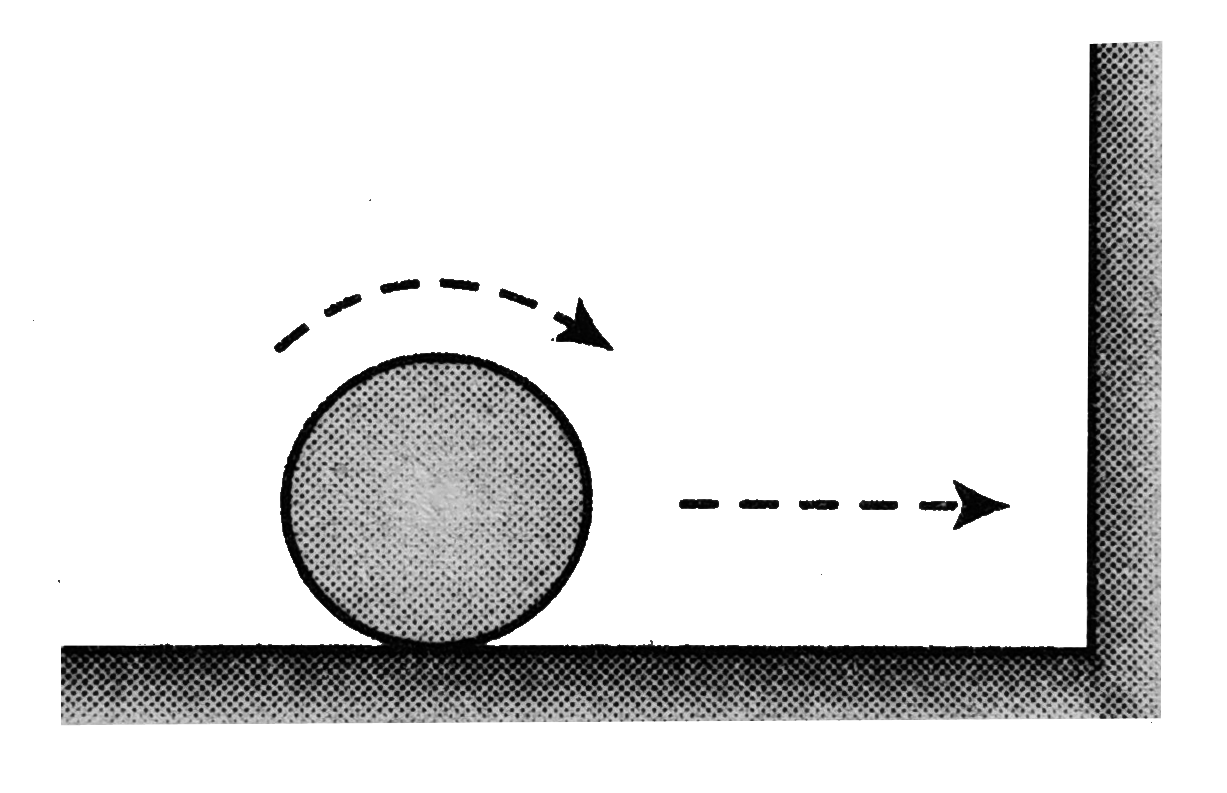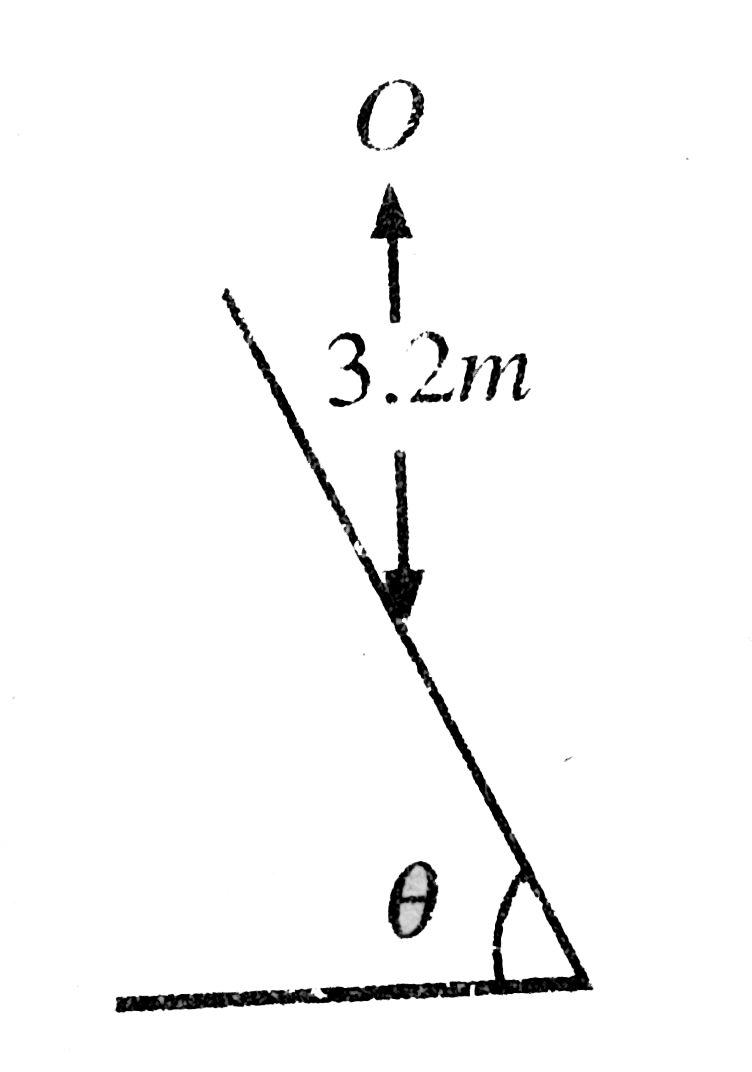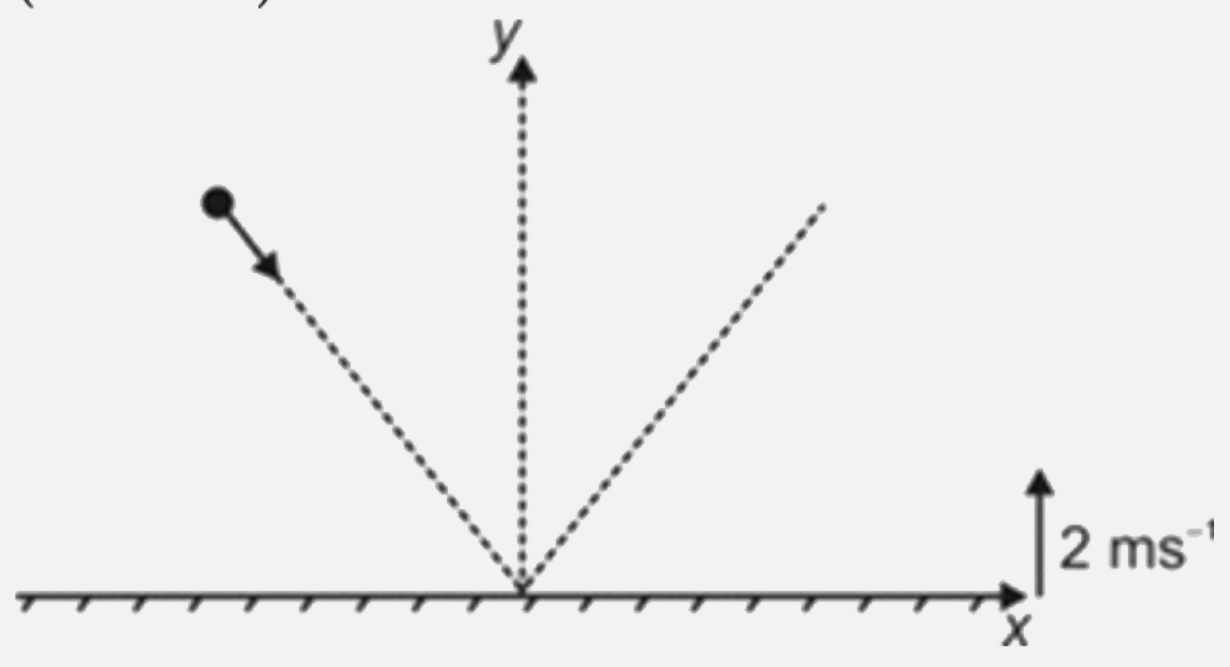A ball of radius R=20cm has mass m=0.75kg and moment of inertia (about its diameter ) I=0.0125kgm2. The ball rolls without sliding over a rough horizontal floor wilth velocity v0=10ms−1 towards a smooth vertical wall if coefficient of resutitution between the wall and the ball is e=0.7, calculate velocity v of the ball long after the collision. (g=10ms−2)
To solve the problem step by step, we will use the concept of the coefficient of restitution and the properties of rolling motion.
Step 1: Understanding the initial conditions
The ball has the following properties:
- Radius R=20cm=0.2m
- Mass m=0.75kg
- Moment of inertia about its diameter I=0.0125kg m2
- Initial velocity v0=10m/s
- Coefficient of restitution e=0.7
Step 2: Applying the coefficient of restitution
The coefficient of restitution e is defined as:
e=vf−vwvi−vw
Where:
- vf is the final velocity of the ball after the collision.
- vi is the initial velocity of the ball before the collision.
- vw is the velocity of the wall (which is stationary, hence vw=0).
Substituting the known values, we have:
e=vf−0vi−0=vfvi
Thus,
vf=e⋅vi
Step 3: Substituting the values
Now substituting e=0.7 and vi=10m/s:
vf=0.7⋅10m/s=7m/s
Step 4: Considering the direction of velocity
Since the ball is rolling towards the wall, after the collision, the direction of the ball's velocity will be reversed. Therefore, the final velocity v of the ball after the collision will be:
v=−7m/s
Conclusion
The velocity of the ball long after the collision is v=−7m/s. The negative sign indicates that the ball is moving in the opposite direction after the collision.
---
The ball has the following properties:
- Radius R=20cm=0.2m
- Mass m=0.75kg
- Moment of inertia about its diameter I=0.0125kg m2
- Initial velocity v0=10m/s
- Coefficient of restitution e=0.7
The coefficient of restitution e is defined as:
e=vf−vwvi−vw
Where:
- vf is the final velocity of the ball after the collision.
- vi is the initial velocity of the ball before the collision.
- vw is the velocity of the wall (which is stationary, hence vw=0).
e=vf−0vi−0=vfvi
Thus,
vf=e⋅vi
Now substituting e=0.7 and vi=10m/s:
vf=0.7⋅10m/s=7m/s
Since the ball is rolling towards the wall, after the collision, the direction of the ball's velocity will be reversed. Therefore, the final velocity v of the ball after the collision will be:
v=−7m/s
The velocity of the ball long after the collision is v=−7m/s. The negative sign indicates that the ball is moving in the opposite direction after the collision.
Topper's Solved these Questions
- RIGID BODY DYNAMICS 2Book:CENGAGE PHYSICS ENGLISHChapter:RIGID BODY DYNAMICS 2Exercise:Exercise 3.1
Explore 11 Videos
- RIGID BODY DYNAMICS 2Book:CENGAGE PHYSICS ENGLISHChapter:RIGID BODY DYNAMICS 2Exercise:Exercise 3.2
Explore 13 Videos
- RIGID BODY DYNAMICS 2Book:CENGAGE PHYSICS ENGLISHChapter:RIGID BODY DYNAMICS 2Exercise:Interger
Explore 2 Videos
- RIGID BODY DYNAMICS 1Book:CENGAGE PHYSICS ENGLISHChapter:RIGID BODY DYNAMICS 1Exercise:Integer
Explore 11 Videos
- SOUND WAVES AND DOPPLER EFFECTBook:CENGAGE PHYSICS ENGLISHChapter:SOUND WAVES AND DOPPLER EFFECTExercise:Integer
Explore 16 Videos
Similar Questions
A ball rolls without sliding over a rough horizontal floor with velocity v0=7m/s towards a smooth vertical wall. If coefficient of restitution between the wall and the ball is e=0.7. Calculate velocity v of the ball after the collision.
View SolutionA block of mass m is gently placed over a massive plank moving horizontal over a smooth surface with velocity 10ms−1. The coefficient of friction between the block and the plank is 0.2. The distance travelled by the block till it slides on the plank is [g=10ms−2]
View Solution
Knowledge Check
A ball of mass m moving with a speed 2v0 collides head-on with an identical ball at rest. If e is the coefficient of restitution, then what will be the ratio of velocity of two balls after collision?
A1−e1+eBe−1e+1C1+e1−eDe+1e−1A ball of mass m moving with a speed 2v0 collides head-on with an identical ball at rest. If e is the coefficient of restitution, then what will be the ratio of velocity of two balls after collision?
A1−e1+eB1+e1−eCe−1e+1De+1e−1
A ball, rolling purely on a horizontal floor with centre's speed v, hits a smooth vertical wall surface elastically. Answer the following questions.

Just after the collision is over, the velocity of the lowest point of the ball is
View SolutionA glass ball collides with an identical ball at rest with v0=2 m/sec. If the coefficient of restitution of collision is e = 0.5, find the velocities of the glass balls just after the collision.
View SolutionA ball moving with velocity 2ms−1 collides head on with another stationary ball of double the mass. If the coefficient of restitution is 0.5, then their velocities (in ms−1) after collision will be
View SolutionA ball of mass 1kg is dropped from a height of 3.2m on smooth inclined plane. The coefficient of restitution for the collision is e=1/2. The ball's velocity become horizontal after the collision.

View SolutionA ball of mass m moving with velocity v collides head-on which the second ball of mass m at rest. I the coefficient of restitution is e and velocity of first ball after collision is v1 and velocity of second ball after collision is v2 then
View SolutionConsider a horizontal surface moving vertically upward with velocity 2ms−1. A small ball of mass 2 kg is moving with velocity (2ˆi−2ˆj)ms−1 If the coefficient of restitution and coefficient of friction are 12and13 respectively, find the horizontal velocity (in ms−1) of the ball after the collision.

View Solution